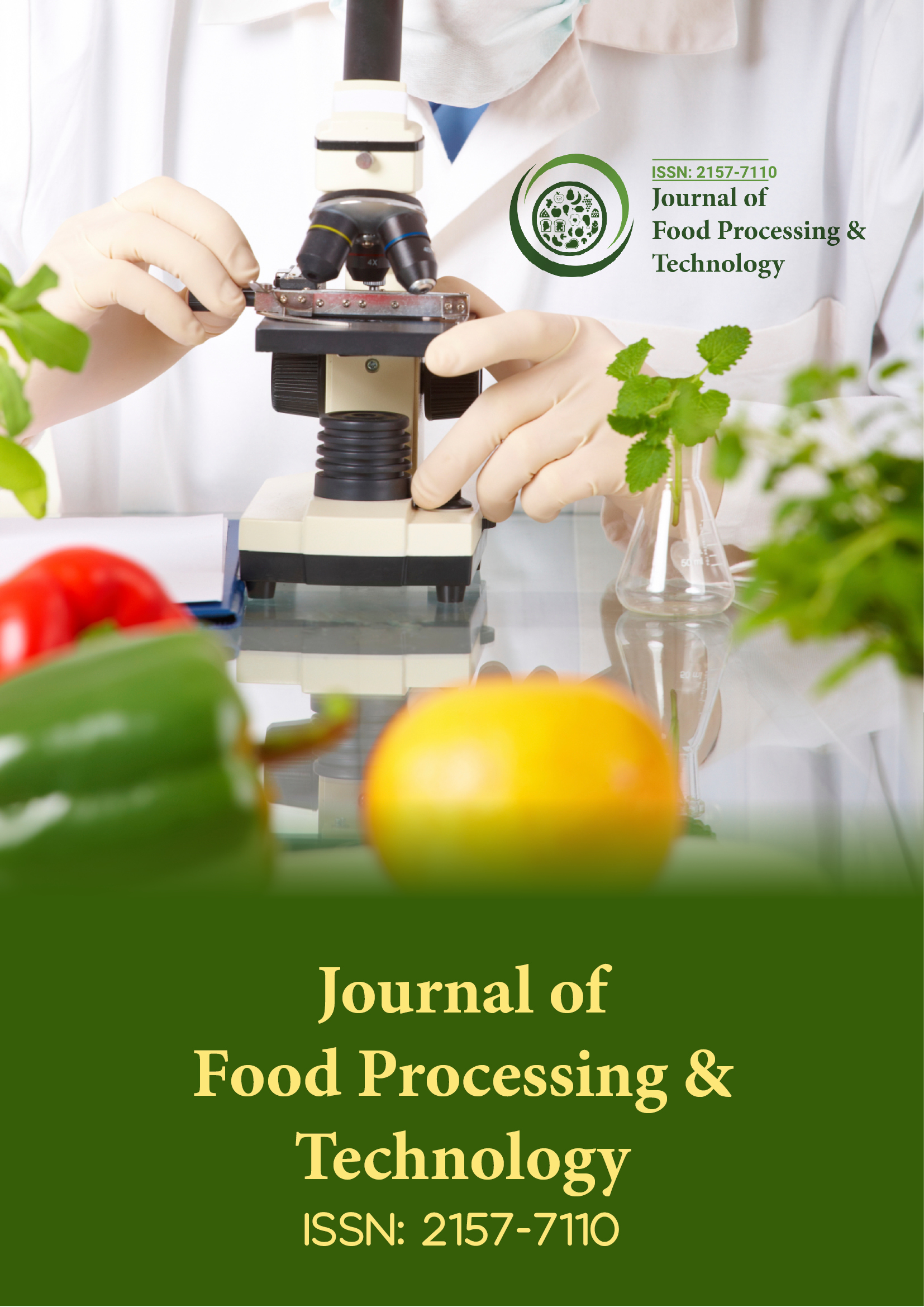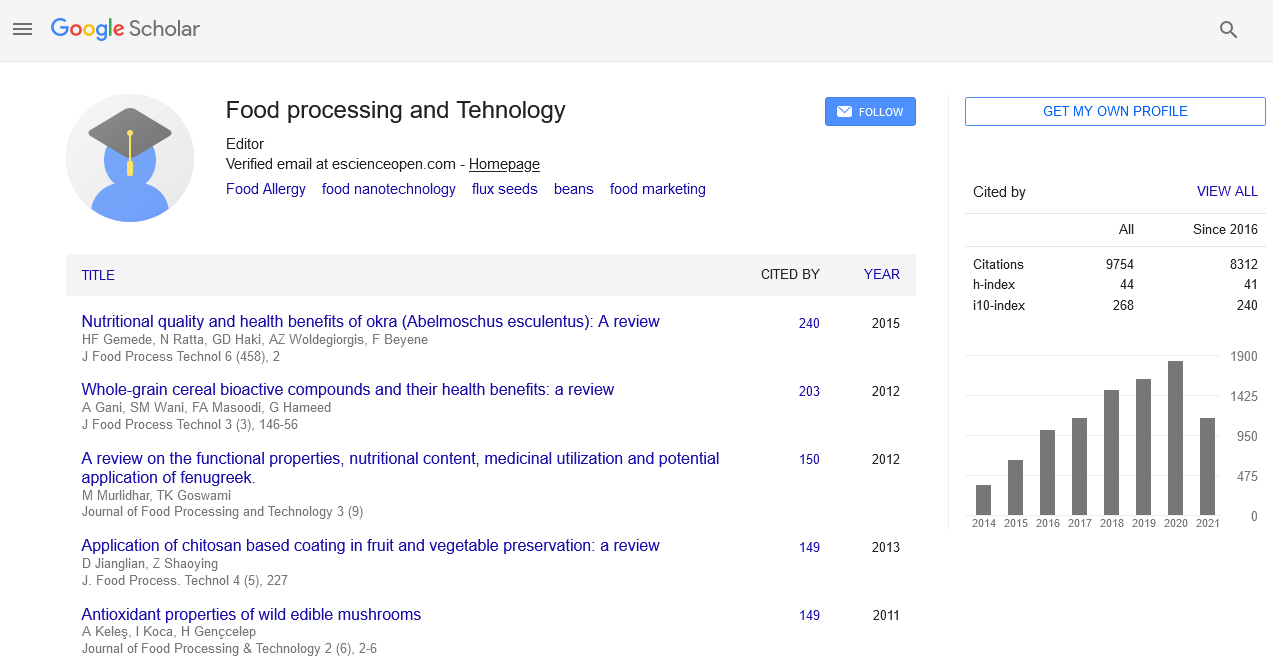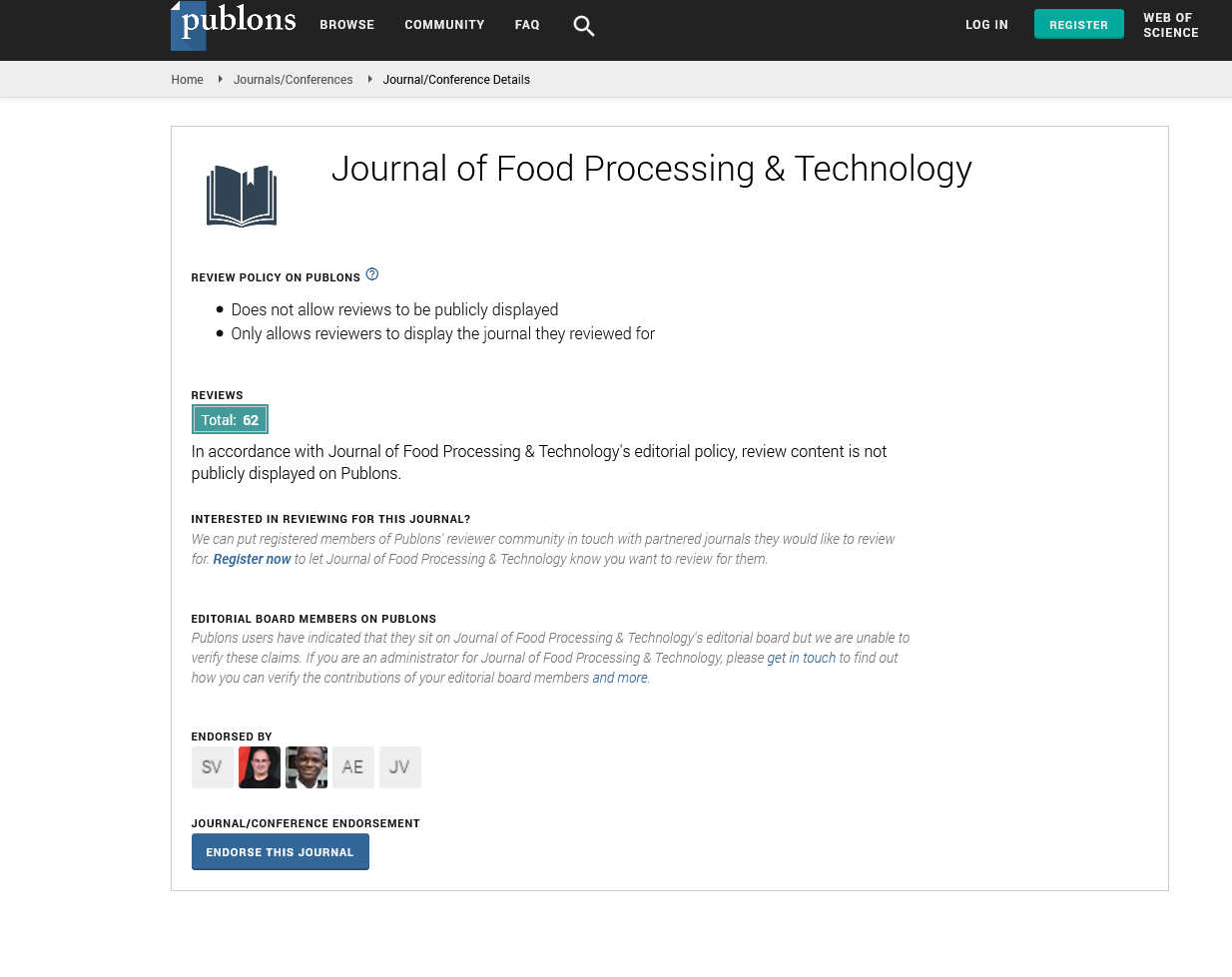Indexed In
- Genamics JournalSeek
- Academic Keys
- JournalTOCs
- China National Knowledge Infrastructure (CNKI)
- Access to Global Online Research in Agriculture (AGORA)
- Centre for Agriculture and Biosciences International (CABI)
- RefSeek
- Directory of Research Journal Indexing (DRJI)
- Hamdard University
- EBSCO A-Z
- OCLC- WorldCat
- Scholarsteer
- SWB online catalog
- Publons
- Euro Pub
- Google Scholar
Useful Links
Share This Page
Journal Flyer

Open Access Journals
- Agri and Aquaculture
- Biochemistry
- Bioinformatics & Systems Biology
- Business & Management
- Chemistry
- Clinical Sciences
- Engineering
- Food & Nutrition
- General Science
- Genetics & Molecular Biology
- Immunology & Microbiology
- Medical Sciences
- Neuroscience & Psychology
- Nursing & Health Care
- Pharmaceutical Sciences
Perspective - (2025) Volume 16, Issue 2
Trends in Plant-Based Protein Development for Food Applications
Sophie Martin*Received: 28-Mar-2025, Manuscript No. JFPT-25-29643; Editor assigned: 31-Mar-2025, Pre QC No. JFPT-25-29643; Reviewed: 14-Apr-2025, QC No. JFPT-25-29643; Revised: 22-Apr-2025, Manuscript No. JFPT-25-29643; Published: 28-Apr-2025, DOI: 10.35248/2157-7110.25.16.1157
Description
The global shift toward plant-based diets has created a surge in demand for protein alternatives derived from legumes, grains, and oilseeds. Food manufacturers are investing heavily in research to improve the functionality, flavor, and nutritional value of plant proteins so they can serve as effective replacements for animal-derived ingredients. This trend is driven by consumer interest in health, environmental concerns, and ethical considerations. Soy protein has been the most widely used plant protein due to its favorable amino acid profile and functional properties in food systems. However, reliance on soy has raised concerns about allergenicity and deforestation linked to soybean cultivation. As a result, research is expanding into alternative sources such as pea, fava bean, chickpea, and lentil proteins. These sources are gaining attention for their high digestibility, versatility, and lower environmental impact compared to animal proteins.
The challenge with plant proteins often lies in their sensory characteristics. Many plant-derived proteins exhibit bitter flavors or gritty textures when incorporated into food products. To overcome these issues, scientists are applying advanced processing methods such as enzymatic hydrolysis, fermentation, and extrusion. These techniques improve solubility, enhance flavor, and modify texture, making plant proteins more suitable for applications in beverages, meat analogs, and bakery products. Another focus of research is protein blending. By combining different plant proteins, food developers can achieve a more balanced amino acid profile that mimics animal proteins more closely. Blending also helps mask undesirable flavors and improve functionality, particularly in texturized products such as plant-based burgers and sausages.
Nutritional enhancement is being explored through fortification with vitamins and minerals, addressing potential deficiencies in plant-based diets. For example, iron and vitamin B12 fortification are common strategies in plant protein products aimed at replacing meat. Additionally, the incorporation of bioactive compounds from plant extracts is being studied to improve antioxidant activity and overall health benefits. From a technological perspective, extrusion cooking has been pivotal in creating meat-like textures from plant proteins. By applying heat, pressure, and shear, proteins are reorganized into fibrous structures that resemble animal muscle fibers. This has enabled the development of highly convincing plant-based meats, which are now widely available in global markets.
Sustainability considerations are integral to the rise of plant proteins. Compared to animal protein production, plant protein cultivation generally requires less land, water, and energy. This aligns with growing efforts to reduce the environmental footprint of food systems. However, scaling production of novel plant proteins still requires investment in infrastructure and supply chain development. The market for plant proteins is expanding rapidly, with opportunities beyond meat substitutes. Dairy alternatives such as plant-based yogurts and cheeses are increasingly popular, and bakery products enriched with plant protein are appealing to health-conscious consumers. With continuous advancements in processing and formulation, plant proteins are set to become mainstream components of the global diet. The evolution of plant-based proteins highlights a transition in consumer preferences and technological innovation. By addressing sensory challenges, improving nutrition, and ensuring sustainability, plant proteins are poised to play an influential role in the future of food applications worldwide.
Citation: Martin S (2025). Trends in Plant-Based Protein Development for Food Applications. J Food Process Technol.16: 1157.
Copyright: © 2025 Martin S. This is an open access article distributed under the terms of the Creative Commons Attribution License, which permits unrestricted use, distribution and reproduction in any medium, provided the original author and source are credited.


